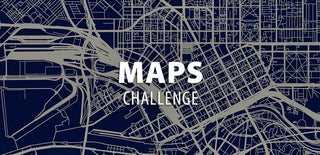Introduction: Image Transfer Onto Wood Map Using Gel Medium.
For this project, I wanted to build a tabletop for a standing desk frame that I was fortunate enough to win from deskstand.com.
For my table, I ended up using SA pine, as it's about the only timber that is affordable for me here in South Africa.
More than that, really all that you need is your printed image that you want transferred and some acrylic gel medium.
I also finished my tabletop with varnish, but you can leave it, or use another suitable product.
Supplies
Materials:
- Piece(s) of wood.
- Table base of your own winning, build or purchase.
- Print that has been mirrored.
- Acrylic gel medium.
- Varnish or wood oil.
Tools:
- Laser printer (possible with inkjet, but not nearly as good tranfer quality)
- Materials for finishing timber:
- Sand paper.
- Electric sander or a sanding block and some elbow grease.
- Router, if possible.
- Paint brushes (with relevant cleaning solvents).
Step 1: Finding Your Map
I found the map of the Drakensburg on Loadmap - http://loadmap.net/en/m41788
As always, ensuring that I wasn't infringing on any copyright was important, and was given the all clear after some research:
All topographic maps produced by the U.S. Geological Survey (USGS) are in the public domain and are not copyrighted except for the following three cases that apply only to US Topo maps (produced 2009-present).
https://www.usgs.gov/faqs/are-usgs-topographic-map...
Seeing that this map was published in 1955, I feel that I was good to go.
Step 2: Flip Your Map
I definitely wanted my map to read correctly, and the transfer will mirror the print. This may not be important if you're doing a photo, but if there is text, or in this case, a topographical map, you really do want to flip the content before printing it.
You can use any image manipulation software, such as Photoshop. If you don't have access to that (or even if you do), this project is 100% possible with a gem of a software called paint.net.
If using paint.net, open the image, and them simply go to the Image menu, and then select 'Flip Horizontal'.
I wanted this black and white, so went and changed that to 'Black and white' from the 'Adjustments' menu. I wanted more contrast too, so also used the 'Auto-level' the image, also under the 'Adjustments' menu.
Once you're ready, you can print the map. My table is slightly large at 0.75 x 1.35m, so I needed to do two A1 prints.
If you want, you can do a poster print, that can tile your map to many pages, as explained by wannaemadsci in their instructable.
Step 3: Prepare Your Surface
So, here I jointed my boards of wood together, got a willing helper to add some weight whilst they were clamped, and then proceded to build the table.
I'm 99% sure that this won't apply to you, but it's always worth showing off a great height-adjustable table. Thanks Deskstand!
After the glue had set, you can route the edge of the table if you have a router. Otherwise, elbow-grease and a sanding block will also work. I was fortunate enough to have a router though, so also etched in the ridges along the edge to catch my pens and pencils which always end up rolling off the table.
Make sure that you are using raw timber, as treated wood may not accept the gel medium.
Step 4: Transfer Time!
Unfortunately, I didn't get photos of the transferring process itself, but fortunately, there are other instructables available that explain this in more detail, such as the on by AverageJoesJoinery.
Learnings:
- If possible, paint your gel medium onto the paper itself, and then stick that down onto the wood.
- Large sheets of paper are difficult to work with, and will likely create creases as you work on getting the transfers down.
- Make sure that you get the gel medium right to the edge of your page. You will see in the next step a wide gap in my print, where I got this wrong.
After applying the gel medium, wait at least 8 hours for it to set.
Step 5: Good Quality H₂O.
Now to remove the paper.
In essence, the gel medium is taking on the ink from your paper, and your next task is to remove the paper itself.
The best way is with water.
Make the paper wet, and then slowly loosen the fibres. Be careful when doing this, as you can easily remove the ink transfer as well.
On a large scale like the table, this was done over multiple afternoons and about 4 passes of slowly and methodically removing the paper fibres.
Ironically, I forgot to take a photo once I was complete, but you can see the end product that I did on a test piece of wood.
Step 6: Adding a Finish.
Here you can now add a layer of varnish or other suitable wood protection, if desired.
Remember to read the instructions of whatever product that you use. My preserve requires thinning of the initial layer with 50% mineral turpentine.
This would not be the right finish to use if doing on food preparation surface, such as a cutting board!
Follow directions, such as sanding lightly between layers.
There is it, after attaching the tabletop to the base, it is now complete and ready to be worked on for years to come!

Participated in the
Maps Challenge







